How Do You Make a Homemade Cheesecake?
- Ushba Adil
- Oct 4, 2024
- 20 min read
How to Make a Homemade Cheesecake in London
Making a cheesecake at home is one of the most satisfying culinary projects. Whether you're preparing it for a special event or simply indulging yourself in a slice of creamy heaven, cheesecake is a beloved dessert in the UK. In London, access to quality ingredients is easy, and you can find everything you need to whip up a delicious homemade cheesecake. This guide will break down the process into three parts: preparing the base and equipment, understanding the core ingredients and recipe, and adding finishing touches with tips on storage and presentation.

Preparing for Success: The Basics of Homemade Cheesecake in London
When it comes to making a homemade cheesecake, the first step is to set the foundation for success. This section will guide you through the essential aspects of preparation, such as selecting ingredients, understanding different types of cheesecakes, and gathering the right equipment. Whether you're new to baking or have some experience, these tips will help you get started on the right foot.
Choosing the Type of Cheesecake
There are various types of cheesecakes, and deciding which one to make depends on your personal preference. The two main categories are baked cheesecakes and no-bake cheesecakes.
Baked Cheesecake:
A traditional, dense dessert with a rich, creamy filling.
Commonly baked in a water bath to prevent cracking and ensure even cooking.
Popular versions include New York cheesecake, ricotta cheesecake, and mascarpone-based variations.
No-Bake Cheesecake:
Quick and easy, this version doesn't require baking.
It sets in the fridge, making it a great option for those who want to avoid using the oven.
Lemon and berry variations are common no-bake styles.
For this guide, we will focus on a classic baked cheesecake recipe, which delivers the best of both worlds with a firm, smooth texture and rich flavour.
Essential Ingredients for Cheesecake
Understanding the key ingredients is crucial for making a great cheesecake. In London, these ingredients are readily available at major supermarkets, specialty food stores, or even online grocery services. Here's a breakdown of what you'll need:
Cream Cheese:
The main ingredient that gives cheesecake its creamy texture.
Available from popular brands like Philadelphia, or you can find artisanal options at Borough Market.
A 280g tub of cream cheese typically costs around £2.50.
Digestive Biscuits (for the base):
These biscuits form the buttery crust for most cheesecakes in the UK.
You can find digestives in any grocery store, such as Tesco or Sainsbury's.
A 400g pack of McVitie’s Digestives costs approximately £1.50.
Butter:
Used to bind the digestive biscuits into a firm base.
A good-quality unsalted butter, such as Lurpak, is ideal. It costs around £3.20 for a 250g block.
Sugar:
Castor sugar is commonly used in cheesecake recipes.
Expect to spend about £1.20 for a 1kg pack of Tate & Lyle sugar.
Eggs:
Eggs help give the cheesecake structure and richness.
Free-range eggs are widely available, costing approximately £2.00 for six.
Double Cream:
Adds an extra layer of smoothness to the filling.
Available from all major supermarkets, with a 300ml carton priced at about £1.30.
Vanilla Extract:
A good-quality vanilla extract adds depth of flavour.
Nielsen-Massey is a popular choice, and a small bottle costs around £4.00.
Lemon Zest:
Used to add a touch of brightness and balance the richness of the cream cheese.
Fresh lemons are about 30p each.
Equipment for Homemade Cheesecake
To make a homemade cheesecake, you’ll need the following equipment, all of which is easily accessible in London through stores like John Lewis, Lakeland, or online retailers such as Amazon UK:
Springform Tin:
A 23cm (9-inch) springform tin is the best choice for cheesecakes, as the removable base allows for easy release.
Available from Lakeland for about £12.99.
Mixing Bowls:
At least two large bowls are necessary for mixing the crust and the filling.
You can find a set of stainless-steel mixing bowls for around £10 at most kitchen stores.
Electric Mixer:
While you can mix by hand, an electric mixer or stand mixer makes the process easier and ensures a smooth filling.
A basic hand mixer costs around £25 from Argos.
Spatula:
A rubber spatula helps in folding ingredients and scraping down the sides of the bowl.
Expect to pay around £3 for a decent spatula.
Baking Sheet:
You’ll place the springform tin on a baking sheet to catch any potential leaks.
Most non-stick baking sheets are priced between £8-£12.
Measuring Cups and Spoons:
Accurate measurements are key to baking success. A set of stainless-steel measuring cups and spoons will set you back about £10.
Aluminium Foil:
Used to wrap the tin when baking the cheesecake in a water bath (Bain-Marie), which helps in even cooking.
A pack of heavy-duty foil costs about £2.
Preparing the Crust
The first step in any cheesecake recipe is preparing the crust. The base of the cheesecake is typically made from crushed digestive biscuits mixed with melted butter. Here's how you can do it:
Crush the Digestive Biscuits:
Place the digestive biscuits into a plastic bag and crush them using a rolling pin until they are fine crumbs. Alternatively, you can use a food processor.
You’ll need about 200g of biscuits for a standard cheesecake.
Melt the Butter:
Melt 100g of unsalted butter in a saucepan or the microwave. Be careful not to burn it.
Combine the Biscuits and Butter:
Mix the melted butter with the crushed biscuits until all the crumbs are evenly coated.
This mixture forms the crust of your cheesecake.
Press into the Tin:
Pour the mixture into the springform tin and press it down firmly using the back of a spoon or your fingers to create an even base.
Chill the base in the fridge for at least 30 minutes while you prepare the filling.
The Recipe – A Step-by-Step Guide to Making Homemade Cheesecake
Now that you have all the essential knowledge to prepare for making cheesecake, it's time to move on to the heart of the process: the recipe itself. In this section, we'll break down the ingredients, explain how much you need, and where you can purchase them in London. Additionally, we'll go through the steps for preparing and baking your cheesecake so that even if you've never baked before, you'll be able to follow along easily.
Ingredients: What You'll Need and Where to Find Them in London
Here’s a detailed list of ingredients for a classic New York-style baked cheesecake, including their quantities and prices based on London supermarkets as of 2024.
Digestive Biscuits (200g)
Digestive biscuits form the base of your cheesecake. You can find these at Tesco, Sainsbury's, or any local grocery shop.
Price: £1.20 for a 400g pack of McVitie’s Digestives.
You’ll need 200g, which is roughly half the packet.
Unsalted Butter (100g)
Butter helps bind the digestive biscuits to create the perfect crust.
Available at any supermarket; Lurpak is a popular option, but store brands are also good.
Price: £3.20 for a 250g block.
You’ll need 100g, which is about 40% of the pack.
Cream Cheese (600g)
Cream cheese is the star of the show when it comes to cheesecake. Philadelphia is a widely available brand.
Price: £2.50 for a 280g tub.
For this recipe, you will need 600g, which is approximately 2.5 tubs.
Caster Sugar (200g)
Adds sweetness to the filling. Caster sugar dissolves more easily than regular granulated sugar, which is why it's commonly used in baking.
Price: £1.20 for a 1kg pack of Tate & Lyle caster sugar.
Plain Flour (1 tablespoon)
Flour helps stabilise the filling, giving it structure.
Available at any supermarket.
Price: £1.00 for 1.5kg.
You’ll only need a tablespoon, so this cost is minimal.
Eggs (3 large)
Eggs are essential to the cheesecake’s structure, giving it that rich, creamy texture.
Free-range eggs are widely available across London.
Price: £2.00 for 6 large free-range eggs.
Double Cream (200ml)
Double cream adds extra richness and smoothness to the cheesecake filling.
Available at supermarkets like Tesco and Sainsbury's.
Price: £1.30 for a 300ml carton. You’ll use about two-thirds of the carton.
Vanilla Extract (1 teaspoon)
A small amount of vanilla extract adds a lovely depth of flavour to the cheesecake.
Nielsen-Massey is a high-quality brand available at Waitrose.
Price: £4.00 for a 60ml bottle. A teaspoon is roughly 5ml.
Lemon Zest (from 1 lemon)
A bit of lemon zest cuts through the richness of the cheesecake, adding a fresh, zesty flavour.
Fresh lemons are available everywhere, from local markets to supermarkets.
Price: 30p per lemon. You’ll need just the zest of one lemon.
Method: Step-by-Step Cheesecake Instructions
Now that you’ve gathered all the ingredients, let’s dive into the method of making your cheesecake. Follow these steps carefully to ensure a smooth and delicious cheesecake.
Prepare the Crust:
Crush the Digestive Biscuits: Place the 200g of digestive biscuits in a food processor or a plastic bag. Use a rolling pin to crush them until they become fine crumbs.
Melt the Butter: Melt 100g of unsalted butter either in a small saucepan or in the microwave.
Combine: In a mixing bowl, combine the melted butter and the biscuit crumbs. Stir until the mixture resembles wet sand.
Press the Crust: Take your 23cm (9-inch) springform tin and press the crumb mixture firmly into the base, using the back of a spoon to flatten it evenly. Place the tin in the fridge to chill for 30 minutes while you prepare the filling.
Prepare the Filling:
Beat the Cream Cheese: In a large mixing bowl, beat 600g of cream cheese using an electric hand mixer or stand mixer. Beat on a medium speed until smooth, which should take about 2-3 minutes.
Add the Sugar and Flour: Add 200g of caster sugar and 1 tablespoon of plain flour to the cream cheese. Continue to beat until fully combined and smooth.
Incorporate the Eggs: Add the eggs one at a time, beating well after each addition. This step is crucial for incorporating air and creating a light texture.
Add the Vanilla and Lemon Zest: Stir in 1 teaspoon of vanilla extract and the zest of one lemon. These ingredients add both flavour and aroma.
Add the Double Cream: Finally, fold in the 200ml of double cream using a rubber spatula. Be gentle here to ensure the mixture remains light and airy.
Bake the Cheesecake:
Preheat the Oven: Preheat your oven to 160°C (140°C fan) or Gas Mark 3.
Prepare a Water Bath: Wrap the outside of your springform tin with aluminium foil to prevent water from seeping in. Place the springform tin inside a larger roasting tray, then pour boiling water into the roasting tray until it reaches halfway up the sides of the springform tin. This water bath (also called a Bain-Marie) will help the cheesecake bake evenly and prevent cracking.
Pour the Filling: Pour the cream cheese filling onto the chilled biscuit base and smooth the top with a spatula.
Bake: Place the roasting tray with the cheesecake into the preheated oven and bake for 50-60 minutes. You’ll know it’s ready when the edges are set, but the centre still has a slight wobble.
Cooling the Cheesecake:
Turn off the Oven: Once baked, turn off the oven but leave the cheesecake inside with the door slightly ajar for about an hour. This gentle cooling process helps prevent the top of the cheesecake from cracking.
Chill: After the cheesecake has cooled down to room temperature, transfer it to the fridge to chill for at least 4 hours or overnight. This will help it firm up and develop its flavours.
Where to Buy the Ingredients in London
For those living in London, finding quality ingredients for your cheesecake is easy, thanks to the wide variety of grocery stores and specialty markets available. Here’s where you can get everything you need:
Tesco:
Tesco is a convenient option with stores all across London. They stock everything you need, from digestive biscuits to cream cheese.
Sainsbury’s:
Another reliable supermarket chain, Sainsbury's offers quality butter, cream cheese, and eggs. Their prices are generally comparable to Tesco’s.
For premium ingredients, head to Waitrose, especially if you're looking for high-quality vanilla extract or organic lemons. Prices here may be slightly higher, but the quality is guaranteed.
Borough Market:
If you’re after artisanal ingredients or want to try a specialty cream cheese from local producers, Borough Market is a great place to shop.
Online:
For convenience, you can also order your ingredients online via platforms like Ocado or Amazon Fresh. These services offer home delivery, making it easier to get everything you need without leaving home.
Now that you have the full recipe and know where to source your ingredients in London, you’re well on your way to baking the perfect homemade cheesecake.
Audio Summary of the Recipe of Homemade Cheesecake
Finishing Touches: Presentation, Storage, and Variations for Your Homemade Cheesecake
With the baking complete, it’s time to focus on the final aspects of your cheesecake-making journey. This section will guide you through the finishing touches, including presentation tips, how to store your cheesecake to maintain its freshness, and creative variations to explore if you want to experiment with different flavours.
Presentation Tips: How to Serve Your Cheesecake Beautifully
When it comes to serving a homemade cheesecake, presentation is key. Here are a few tips to ensure your cheesecake looks as stunning as it tastes:
Smooth the Top:
After chilling your cheesecake in the fridge, if you notice any small cracks or imperfections on the surface, use a hot knife (dip the knife in hot water and wipe it dry) to gently smooth out the top. This works particularly well for baked cheesecakes.
Fresh Toppings:
Adding a fresh topping can elevate the look and flavour of your cheesecake. Some popular choices include:
Fresh Berries: Blueberries, raspberries, or strawberries add a burst of colour and a refreshing contrast to the creamy filling.
Coulis: A drizzle of fruit coulis (a smooth fruit sauce) made from puréed raspberries, strawberries, or mango can add a professional touch. You can make a simple coulis by blending fresh fruit with a bit of sugar and a squeeze of lemon juice.
Chocolate Shavings: For chocolate lovers, sprinkle some dark or white chocolate shavings on top for a decadent finish.
Citrus Zest: Add a fine sprinkle of lemon or lime zest for a bright, zesty garnish that cuts through the richness of the cheesecake.
Dusting with Powdered Sugar:
A light dusting of powdered sugar using a fine sieve can create a delicate and sophisticated look, especially if you’re keeping the topping minimal.
Serve with Sides:
While the cheesecake itself is a showstopper, you can serve it with side elements to enhance the dessert experience. A dollop of whipped cream, a scoop of vanilla ice cream, or even a spoonful of tangy crème fraîche can pair wonderfully with the rich cheesecake.
Clean Slices:
For neat, professional-looking slices, use a sharp knife that’s been dipped in hot water and wiped dry before each cut. This technique ensures each slice is smooth and clean without crumbs or filling sticking to the blade.
Storing Your Cheesecake: Keep It Fresh
Homemade cheesecake needs proper storage to maintain its creamy texture and delicious flavour. Whether you’re storing leftovers or making the cheesecake ahead of time, here’s how to keep it fresh:
In the Fridge:
After the cheesecake has chilled and set in the fridge for at least 4 hours (or overnight), you can store any leftovers in the fridge for up to 5 days.
Covering: To prevent the cheesecake from absorbing any unwanted flavours from other foods in the fridge, cover it with plastic wrap or store it in an airtight container. You can also place a piece of parchment paper on top of the cheesecake before wrapping it to avoid the plastic sticking to the surface.
Freezing the Cheesecake:
Cheesecake freezes exceptionally well, making it a great make-ahead dessert option. Here’s how to freeze it:
Slice and Freeze: For easier serving, slice the cheesecake into individual portions before freezing.
Wrap: Wrap each slice (or the whole cheesecake) tightly in cling film, followed by a layer of aluminium foil for added protection.
Freeze: Place the wrapped cheesecake in a freezer-safe container or ziplock bag and store it in the freezer for up to 3 months.
Thawing: To thaw, transfer the cheesecake to the fridge and let it defrost slowly overnight. Avoid thawing at room temperature, as this can lead to a soggy texture.
Refrigerating for Later:
If you’ve made the cheesecake ahead of time for a special occasion, you can keep it in the fridge for up to 2 days before serving. This allows the flavours to develop and the texture to firm up, giving you the best possible result on the day you serve it.
Cheesecake Variations: Get Creative with Flavours
Once you’ve mastered the classic New York-style baked cheesecake, there are countless ways to adapt the recipe to suit your personal taste or create something new for a special occasion. Here are some popular variations you can try at home:
Lemon Cheesecake:
Recipe Adjustment: Add the zest and juice of two lemons to the cream cheese filling for a tart and refreshing twist. Top with a lemon curd drizzle for extra zing.
Where to Buy: Fresh lemons are available at all major supermarkets and local markets in London, priced around 30p each.
Chocolate Cheesecake:
Recipe Adjustment: Melt 200g of dark or milk chocolate and fold it into the cream cheese mixture before baking. You can also add chocolate chips to the filling for a textural contrast.
Topping: Finish with chocolate ganache or grated chocolate for a rich, indulgent dessert.
Where to Buy: Green & Black’s or Lindt dark chocolate bars are widely available in Tesco and Waitrose for around £2 per 100g bar.
Salted Caramel Cheesecake:
Recipe Adjustment: Swirl homemade or store-bought salted caramel sauce into the cream cheese filling before baking.
Topping: Drizzle extra caramel on top and sprinkle with a touch of sea salt just before serving for a delicious sweet-salty combination.
Where to Buy: You can find salted caramel sauces at M&S, priced around £3 for a jar, or make your own using sugar, butter, and cream.
Raspberry Swirl Cheesecake:
Recipe Adjustment: Swirl raspberry purée through the cream cheese mixture before baking. You can make a simple raspberry purée by blending fresh raspberries with a bit of sugar.
Topping: Garnish with fresh raspberries or a dusting of powdered sugar for a light, fruity finish.
Where to Buy: Fresh raspberries are available at most supermarkets, priced around £2 for a 150g pack.
Baileys Cheesecake:
Recipe Adjustment: For a boozy twist, add 75ml of Baileys Irish Cream to the cream cheese mixture. This is perfect for festive occasions.
Topping: You can drizzle chocolate ganache or Baileys caramel sauce over the top for extra indulgence.
Where to Buy: Baileys is available at most off-licenses and supermarkets like Tesco and Sainsbury’s, priced around £15 for a 700ml bottle.
Oreo Cheesecake:
Recipe Adjustment: Replace the digestive biscuits in the crust with crushed Oreo cookies, and fold crushed Oreos into the cream cheese filling.
Topping: Garnish with whipped cream and extra Oreo crumbs.
Where to Buy: Oreo cookies are available at all major supermarkets for around £1.50 per pack.
Troubleshooting Common Cheesecake Issues
Even though cheesecake is a relatively straightforward dessert to make, there are a few common issues that can occur. Here’s how to troubleshoot them:
Cracks in the Cheesecake:
Cause: Cracks usually form due to overbaking or rapid changes in temperature.
Solution: To avoid cracks, bake your cheesecake in a water bath and allow it to cool slowly in the oven with the door slightly open. If cracks do appear, you can easily cover them with toppings like fruit or whipped cream.
Runny Cheesecake:
Cause: This can happen if the cheesecake is underbaked or hasn’t been chilled long enough.
Solution: Ensure the cheesecake is fully baked by checking for a slight wobble in the centre, and always chill it for at least 4 hours before serving.
Soggy Crust:
Cause: A soggy crust is often the result of not chilling the crust long enough or not using enough butter to bind the biscuit crumbs.
Solution: Ensure the crust is fully chilled before adding the filling, and use the correct ratio of butter to biscuit crumbs.
Enjoying the Perfect Homemade Cheesecake in London
Making a homemade cheesecake is a rewarding and enjoyable process, especially when you get to share it with friends and family. Whether you stick with the classic New York-style recipe or get creative with different flavours and toppings, a well-made cheesecake is sure to impress. By following the steps outlined in this guide, you can confidently bake a cheesecake that not only looks professional but tastes incredible.
Remember, the key to a perfect cheesecake lies in the details: choosing the right ingredients, following the method carefully, and giving the cheesecake time to chill and set properly. With the added tips on presentation, storage, and variations, you’ll be able to create a cheesecake that’s as unique as it is delicious.
How Pearls and Crumbs Can Make the Most Amazing Homemade Bespoke Cheesecake Cakes within an Affordable Budget
Pearls and Crumbs, a professional bespoke cake maker based in West London, has been delighting customers with their handcrafted cakes for over a decade. Known for creating luxury, personalized cakes for weddings, birthdays, baby showers, and other special events, they blend art and flavor seamlessly. One of their standout creations is the bespoke cheesecake, which combines traditional techniques with modern flair, all within an affordable budget. Here's how Pearls and Crumbs excels at crafting the perfect homemade bespoke cheesecake cakes in West London.
Expertise in Crafting Bespoke Cheesecakes
With over 10 years of experience, Pearls and Crumbs has honed the art of making bespoke cakes, ensuring that every detail, from flavour to design, is tailored to the client’s specifications. The company’s founder and chief cake designer, Ushba Adil, takes pride in offering a personalized service where each cake reflects the event and individual preferences of the customer. Their cheesecake cakes, made with the highest quality ingredients, are a prime example of this dedication.
The cheesecake cakes at Pearls and Crumbs are designed not only to taste incredible but also to serve as stunning centerpieces for any event. Their attention to detail ensures that each cake is visually appealing, with intricate decorations, creative flavour pairings, and a smooth, rich texture that is sure to impress. Whether it's a classic New York-style cheesecake or a more creative version featuring seasonal fruit or decadent chocolate, their expertise ensures the cake is both delicious and eye-catching.
Affordable Pricing for Bespoke Quality
One of the key features that sets Pearls and Crumbs apart from other luxury cake designers in West London is their ability to offer bespoke cakes at an affordable price point. Despite the high level of craftsmanship and premium ingredients, Pearls and Crumbs works closely with clients to create custom cakes that fit within their budget. Whether you’re looking for a simple yet elegant cheesecake for a small gathering or a multi-tiered masterpiece for a wedding, they will provide options that meet both your aesthetic and financial needs.
The affordability doesn’t come at the expense of quality. They source only the finest ingredients, such as organic eggs, fresh dairy products, and premium chocolates, ensuring that each cheesecake is made to the highest standards. They understand that bespoke cakes should be accessible to everyone, which is why they offer different price tiers depending on the complexity and size of the cake.
Flavour Customization and Dietary Options
At Pearls and Crumbs, flavour is just as important as design. They offer a wide range of cheesecake flavours to suit any palate. Whether you prefer the classic tang of a baked lemon cheesecake or the indulgent richness of a chocolate and salted caramel cheesecake, they can create a flavour profile that matches your taste.
For those looking for something unique, they also offer innovative combinations such as:
Passionfruit and Mango Cheesecake for a tropical twist.
Earl Grey and Lavender Cheesecake for a more sophisticated flavour.
Oreo Cheesecake for those who love a rich, cookie-filled dessert.
In addition to their extensive flavour options, Pearls and Crumbs is mindful of dietary restrictions. They offer gluten-free, vegan, and dairy-free versions of their cheesecakes without compromising on taste or texture. This inclusivity ensures that everyone can enjoy their creations, no matter their dietary needs.
Personalized Design and Thematic Cakes
What truly sets Pearls and Crumbs apart is their ability to incorporate personal touches into every cake design. From wedding cakes adorned with edible flowers to birthday cheesecakes featuring custom toppers and intricate fondant designs, they work closely with clients to ensure the cake reflects the theme and spirit of the event.6
For those looking to add an extra layer of personalization, they offer various customization options, including:
Edible Photos: Have a favourite memory printed onto your cheesecake in edible ink.
Colour Themes: Match the cake to the colour scheme of your event for a seamless aesthetic.
Monograms and Names: Add a personal touch with hand-piped names, initials, or meaningful messages.
Their cheesecake cakes are designed to be more than just desserts; they are works of art that bring a sense of joy and celebration to every occasion.
Delivery and Service Convenience
For customers in West London, Pearls and Crumbs offers a convenient and reliable delivery service. Whether you're planning a last-minute party or organizing a grand event, they ensure that your cheesecake arrives fresh and on time. They cater to events across West London, including areas like Ealing, Chiswick, and Kensington.
In addition to delivery, Pearls and Crumbs provides consultations to help clients choose the perfect cake. Whether you’re meeting in person or communicating via phone or email, they work with you every step of the way to make sure your vision comes to life. This personalized approach has earned them a reputation for excellent customer service and attention to detail.
Sustainability and Ethical Practices
As sustainability becomes an increasingly important factor in consumer choices, Pearls and Crumbs is committed to using environmentally friendly and ethically sourced ingredients wherever possible. They support local suppliers in West London and ensure that their packaging is recyclable and eco-friendly. Their efforts to minimize waste and use organic, fair-trade ingredients demonstrate their dedication to both the community and the environment.
This commitment to ethical practices doesn’t just stop at the ingredients; their labour practices are equally conscientious. Each cake is handmade with care by experienced bakers who are passionate about their craft, ensuring that every cake is not only delicious but made responsibly.
Why Choose Pearls and Crumbs for Your Homemade Bespoke Cheesecake Cake?
In a city as diverse and fast-paced as London, finding a cake maker who can deliver both quality and affordability is no small feat. Pearls and Crumbs stands out as a trusted bespoke cake designer in West London, offering not only stunning, high-quality cakes but also personalized service that ensures every client’s needs are met.
Their cheesecake cakes are a perfect example of their craftsmanship: rich, creamy, and full of flavour, with beautifully detailed designs that make them the highlight of any event. Whether you’re planning a wedding, a birthday party, or a casual gathering, their bespoke cheesecakes are crafted to enhance the celebration without breaking the bank.
For those seeking delicious, professionally made cakes that are tailored to their specific desires, Pearls and Crumbs offers the ideal blend of quality, affordability, and personal service. With 10 years of experience in the industry, they are well-equipped to make your cake dreams a reality.
Gallery of Homemade Cheesecakes
FAQs
1. Can you substitute digestive biscuits with other types of cookies for the base?
Yes, you can substitute digestive biscuits with other cookies such as graham crackers, Oreos, or shortbread. Each will give a slightly different flavour and texture to the base.
2. How long can you store homemade cheesecake in the fridge?
You can store homemade cheesecake in the fridge for up to 5 days if covered properly with cling film or kept in an airtight container.
3. Can you use low-fat cream cheese for making cheesecake?
Yes, but using low-fat cream cheese can affect the texture and richness of the cheesecake, resulting in a less creamy outcome.
4. Can you freeze homemade cheesecake after it’s been baked?
Yes, cheesecake freezes very well. Wrap it tightly in cling film and aluminium foil, and it will last up to 3 months in the freezer.
5. Do you need a water bath for all baked cheesecakes?
A water bath helps prevent cracking and ensures even baking, but it’s not always essential. However, it’s highly recommended for New York-style cheesecakes.
6. Can you make cheesecake without an electric mixer?
Yes, you can mix the ingredients by hand, but it may be harder to achieve a smooth, lump-free texture. A hand whisk or a stand mixer is ideal.
7. Can you make a cheesecake without eggs?
Yes, you can make an eggless cheesecake using substitutes like yogurt, cream cheese, or silken tofu. No-bake versions often skip eggs entirely.
8. What type of tin is best for baking cheesecake?
A springform tin is the best choice for cheesecakes, as it allows easy removal without damaging the cake’s structure.
9. Can you use a different type of cheese for cheesecake?
Yes, mascarpone, ricotta, or quark can be used as substitutes for cream cheese, but they will change the texture and flavour of the cheesecake.
10. What’s the best way to prevent a cheesecake from cracking?
Baking the cheesecake in a water bath, not overmixing the batter, and allowing it to cool slowly in the oven with the door ajar can help prevent cracks.
11. How do you know when your cheesecake is fully baked?
The edges of the cheesecake should be set, but the centre should have a slight wobble. It will firm up as it cools.
12. What is the best temperature for baking cheesecake?
The ideal temperature for baking cheesecake is 160°C (140°C fan), which ensures slow, even cooking without overbaking.
13. Can you make mini cheesecakes instead of one large one?
Yes, you can use a muffin tin with cupcake liners to make mini cheesecakes. Adjust the baking time to around 20-25 minutes.
14. How can you add a swirl or marbling effect to a cheesecake?
To add a swirl, mix a fruit purée, chocolate, or caramel into the cheesecake batter and gently swirl it through with a toothpick before baking.
15. What should you do if your cheesecake is too runny after baking?
If your cheesecake is too runny, it may need more baking time. You can also try chilling it for longer, as this can help it firm up.
16. Can you make a vegan cheesecake in London?
Yes, vegan cheesecakes can be made using plant-based alternatives such as coconut cream, cashews, or vegan cream cheese. Many London stores offer vegan-friendly products.
17. What’s the difference between New York-style cheesecake and regular cheesecake?
New York-style cheesecake is dense and rich due to the use of more cream cheese and eggs, while regular cheesecakes can be lighter with various textures.
18. Can you make cheesecake in advance for an event?
Yes, cheesecake is a great make-ahead dessert. You can make it 1-2 days in advance and store it in the fridge until ready to serve.
19. How can you prevent a soggy cheesecake crust?
Make sure the crust is chilled before adding the filling, and if using a water bath, wrap the springform tin in aluminium foil to prevent water from seeping in.
20. Can you substitute sugar with a sweetener in cheesecake?
Yes, you can substitute sugar with a sweetener like stevia or erythritol, but be sure to adjust the amount as sweeteners are often much sweeter than sugar.

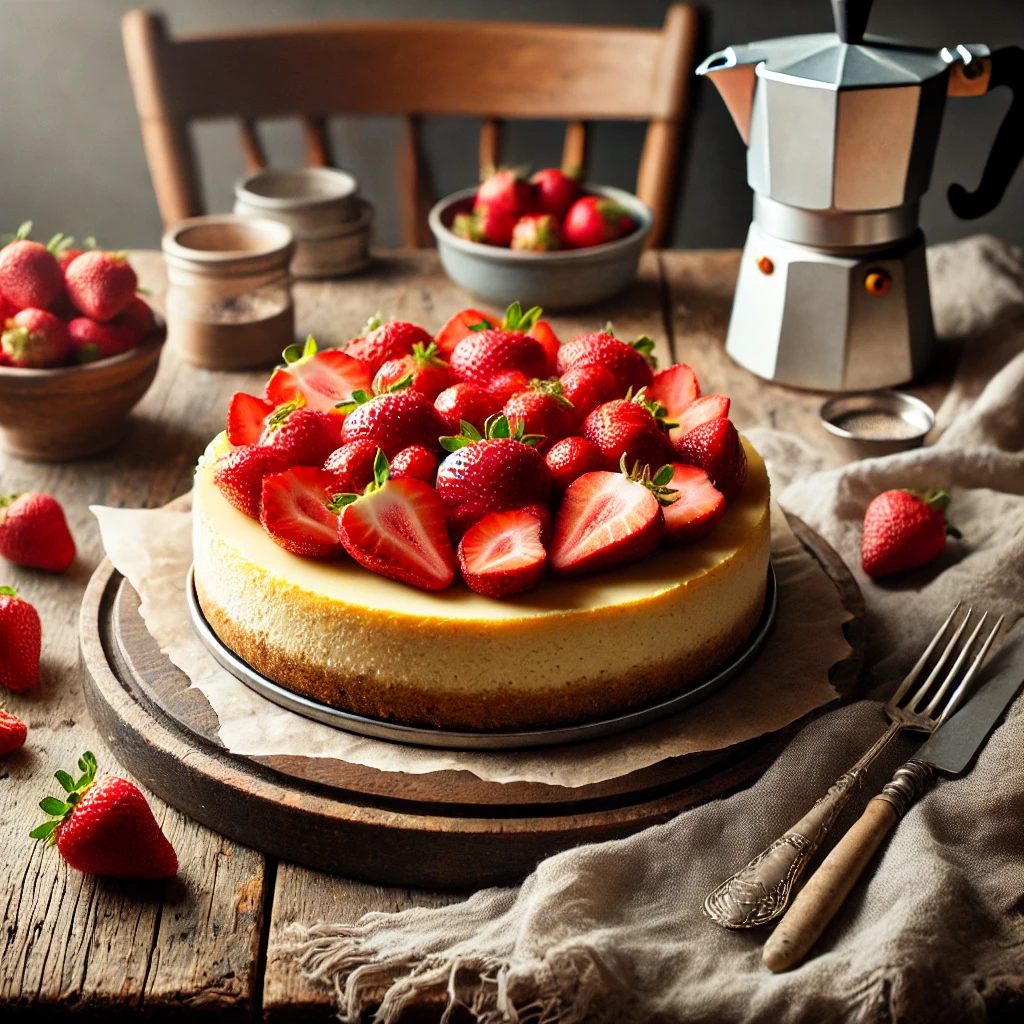
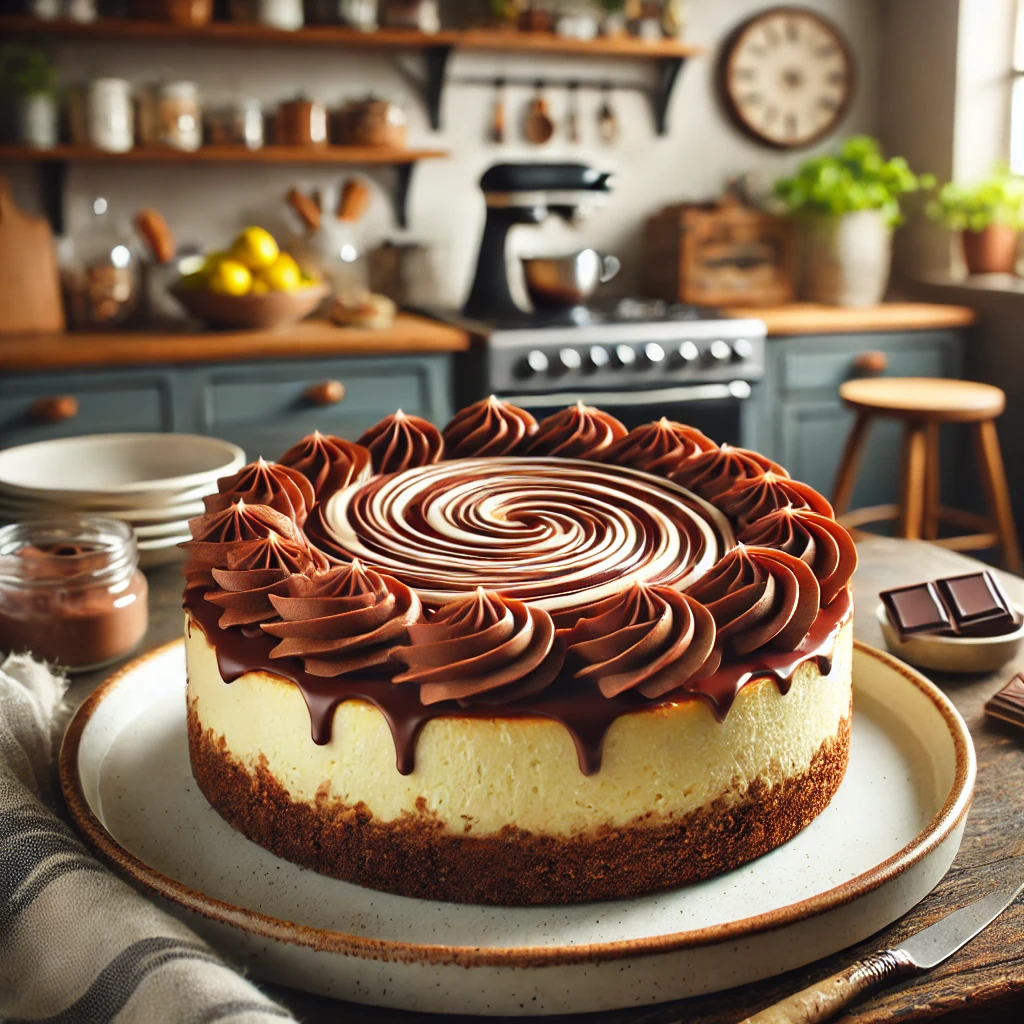
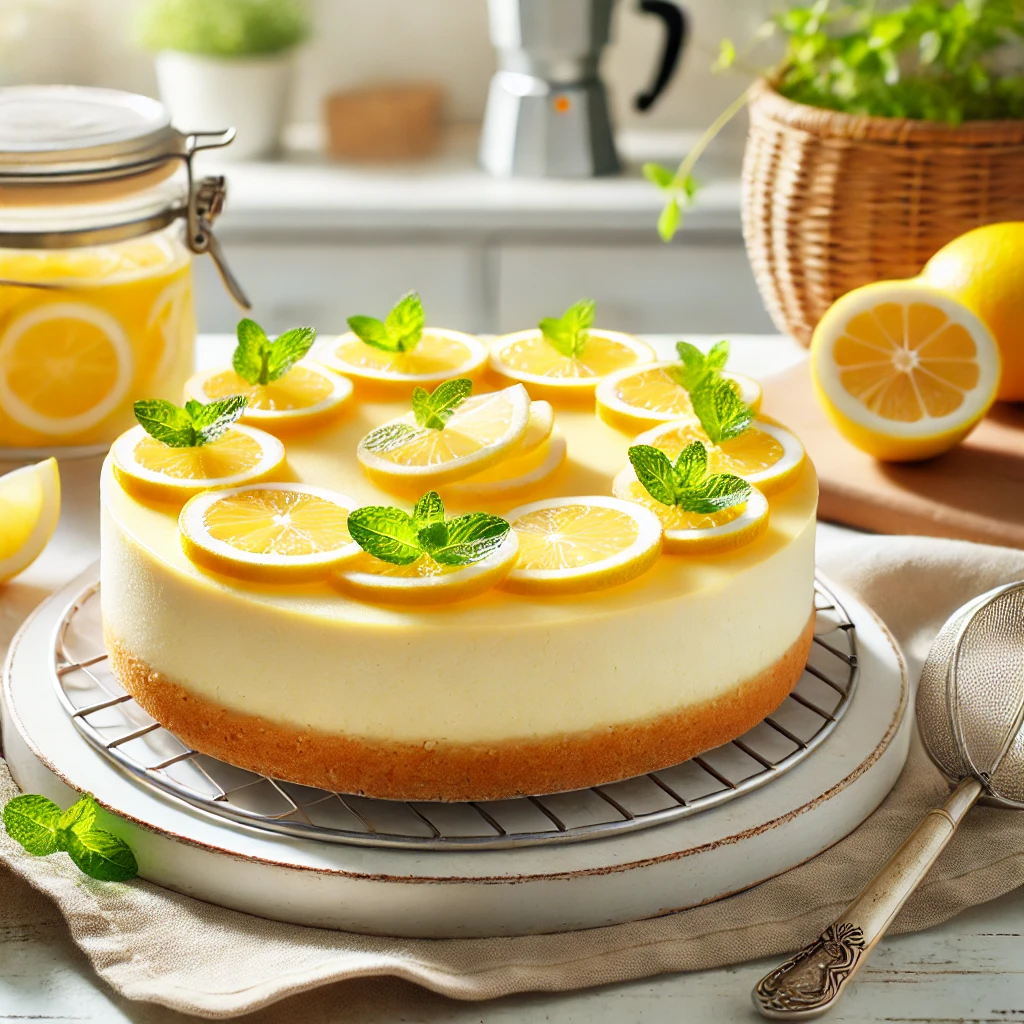
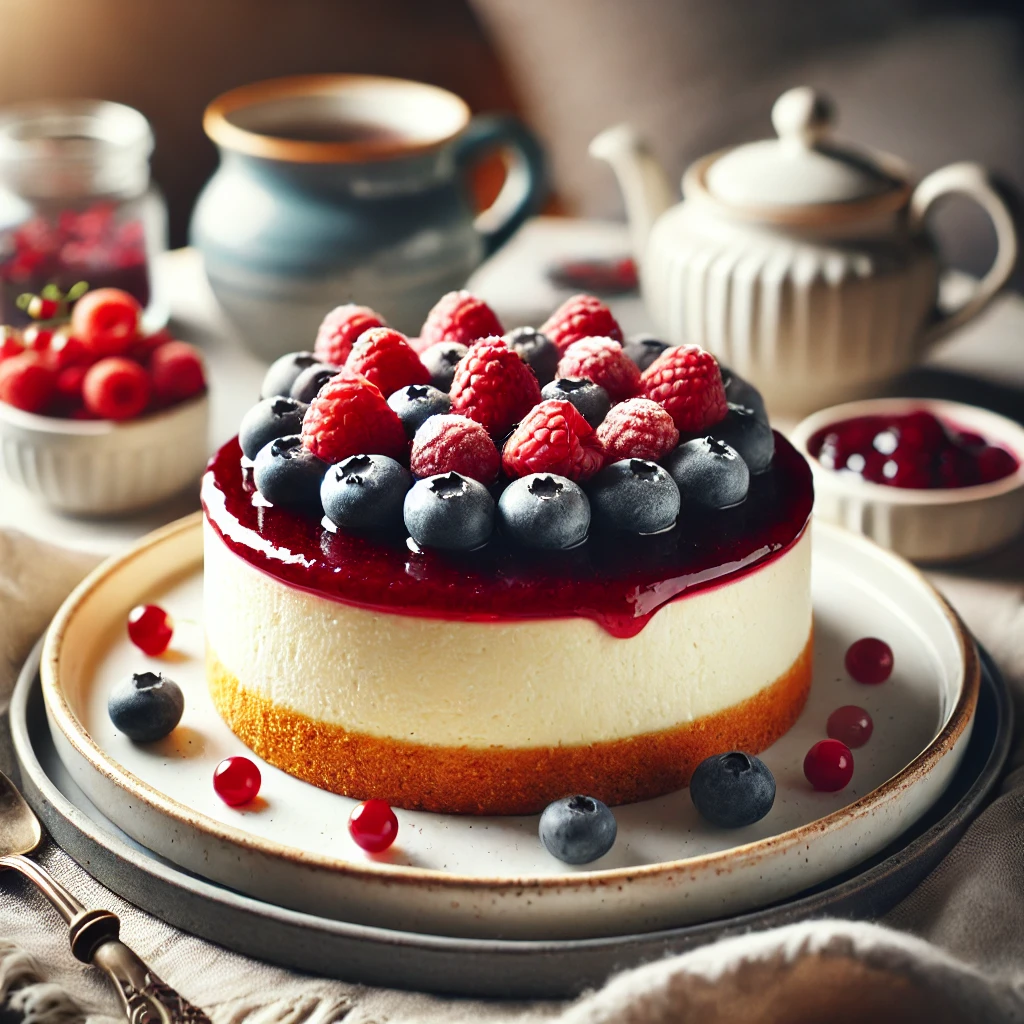
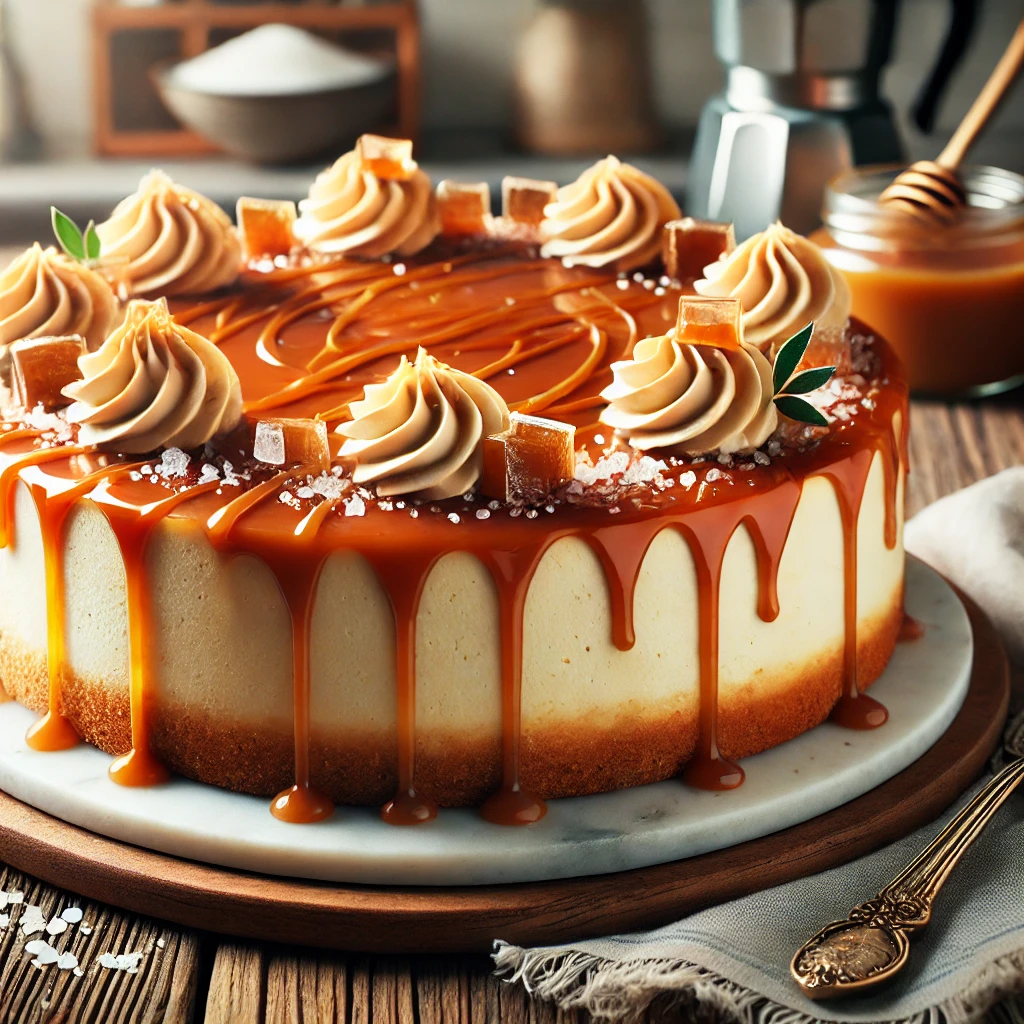
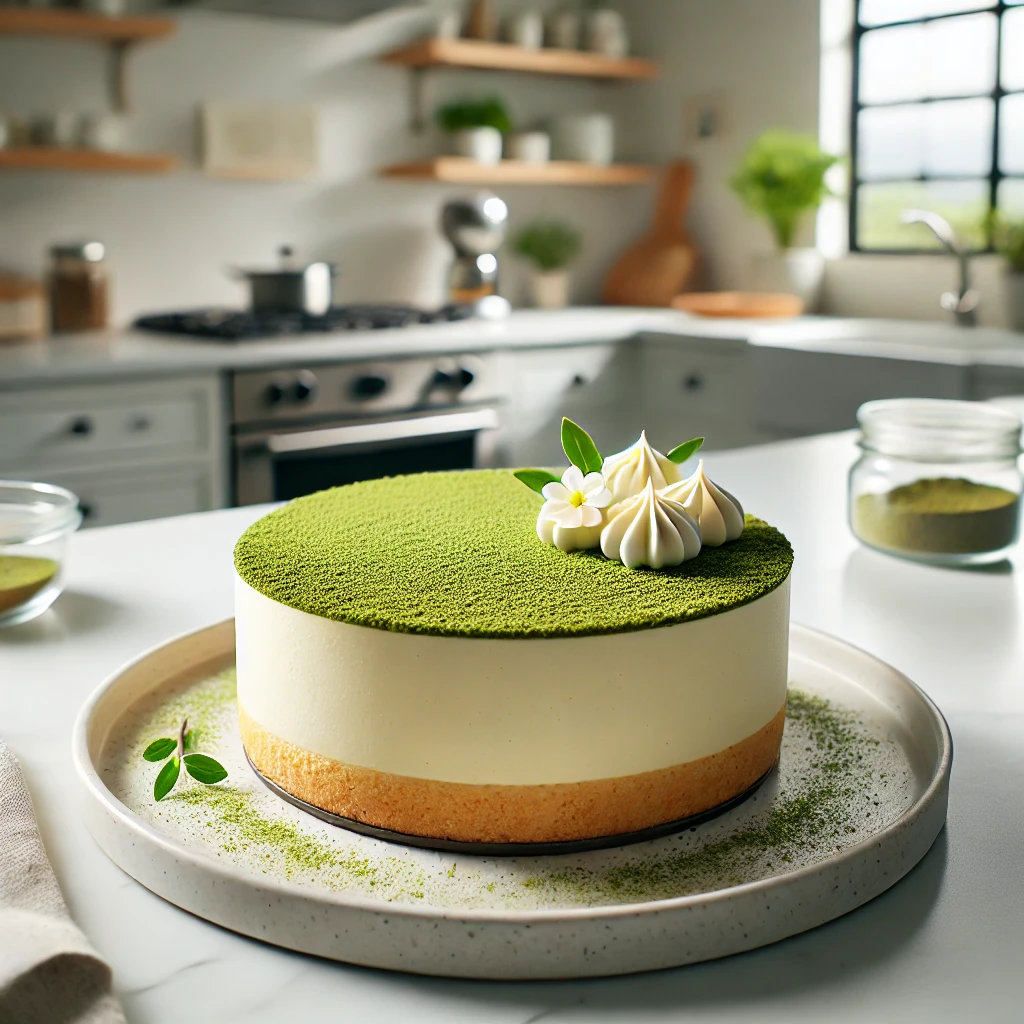
.png)
Opmerkingen